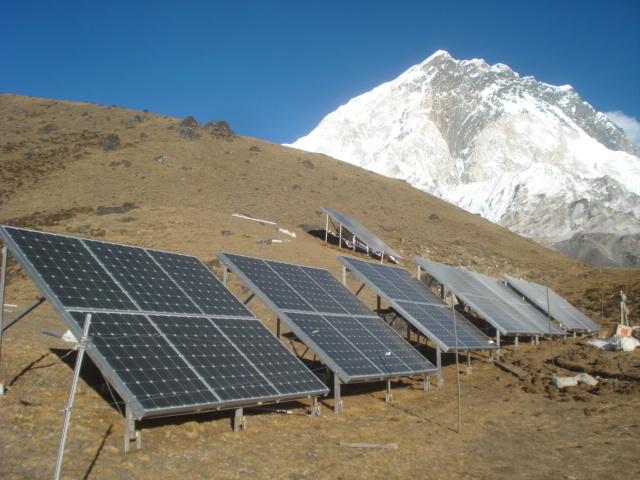No one can deny that the solar industry is booming. There may be disagreements as to why…opponents claim that solar is too dependent on government subsidies, while supporters point out that solar’s rise is due primarily to market demand for a solid new technology. One thing’s for sure, though– solar is flourishing in times that are very uncertain, both economically and environmentally.
One of solar’s strongest selling points has always been its fixed cost. Paying up-front for electrical generation (or offsetting natural gas, in the case of solar thermal systems) has always been seen as a solid hedge against the inevitability of rising energy prices, or against other negative economic impacts, like inflation. The U.S. Energy Information (E.I.A.) that “Residential electricity prices increased during 2014, with growth ranging from 1.3% in the Pacific Coast states to 9.8% in New England.” Many consumers see this upward trend as a good reason to make the jump to solar.
Of course, the off-grid solar system is the energy source of choice of those who want a solid source of back-up electricity, are located in remote areas where grid power is impractical, or want to “cut the cord” to the utility company completely. Battery storage technology is a hot topic right now, with high profile investors like Elon Musk looking at the solar/battery option as a strong contender for future energy development. In addition, the “prepper” community has always seen solar as part of a portfolio of technologies necessary to survive against what they see as an inevitable collapse of society as we know it. As unlikely as some of these “doomsday scenarios” may seem to others, solar is proving to be an important tool for dealing with more localized catastrophes that are happening right now.
 For California farmers locked in the grip of a record-breaking drought, solar is providing a very real key to economic survival. California is suffering from a one-two punch from the drought– not only are crops suffering from lack of water, but hydroelectric dams are unable to generate electricity due to the low water levels. Almond farmers are among the worst hit, and some are adapting by downsizing their agricultural operations and installing large solar generating plants. Not only does this provide much-needed alternative income to the farmers, but it helps in offsetting the loss of the hydro-powered generation. According to Grist:
For California farmers locked in the grip of a record-breaking drought, solar is providing a very real key to economic survival. California is suffering from a one-two punch from the drought– not only are crops suffering from lack of water, but hydroelectric dams are unable to generate electricity due to the low water levels. Almond farmers are among the worst hit, and some are adapting by downsizing their agricultural operations and installing large solar generating plants. Not only does this provide much-needed alternative income to the farmers, but it helps in offsetting the loss of the hydro-powered generation. According to Grist:
“Solar power has exploded in California over the past two years as a number of enormous utility-scale projects have come online. California has almost 10,000 megawatts of solar, according to the Solar Energy Industries Association, a national trade group, producing enough power to meet 5 percent of state demand in 2014. Over half of that is from big utility systems, which fill acres and acres with both photovoltaic and mirrored solar systems.”
Even in earthquake ravaged Nepal, solar is being utilized by search and rescue teams, triage centers and hospitals. A small non-profit organization, Empower Generation, was already working in Nepal at the time of the quake on April 25th, 2015. According to their website:
“On 27 April we set up a solar powered charging station at our office in Lazimpat and we are donating solar lights to hospitals in Kathmandu. We have also started working with fellow clean energy social enterprise Kopernik so we can distribute lights to Dhading, a region devastated by the quake, where we have three women entrepreneurs based…Rescue and relief efforts currently underway are being hindered by unreliable access to energy in the areas most affected. In the wake of this tragedy, Empower Generation is in a unique position to offer immediate relief on the ground with our existing inventory of solar power kits and our strong local distribution network.”

Empower Generation is accepting donations to cover the cost of providing solar lighting to emergency workers and others as recovery efforts move forward in Nepal.
Aside from the more mundane day-to-day reliability of solar power as a source of clean, renewable energy, the very nature of solar generation makes it an ideal tool for mitigating the negative impacts of natural catastrophes, as well as man-made economic disasters. In good times or bad, solar helps to light the way to a bright future.





